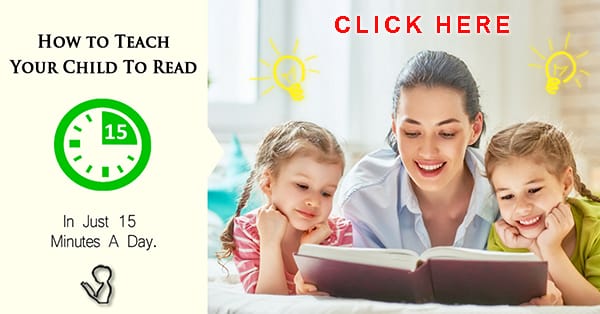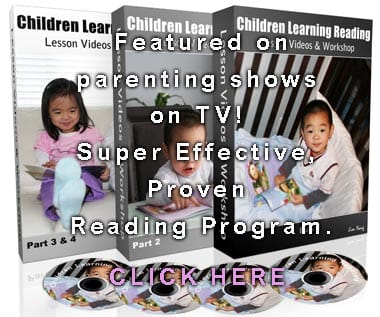The Best Books to Teach Reading
The Best Books to Teach Reading: Books are a great way to learn how to read. They provide a wealth of knowledge and provide a great way to learn a language. Reading books can help to develop a love of reading and can help to develop a person’s reading comprehension skills. Books can also help to provide an understanding of different cultures and can provide a way to explore new topics. Reading books can be both fun and educational and can help to provide an avenue to develop new skills.

The Best Books to Teach Reading
![]()
Reading is a fundamental skill that opens up a world of knowledge and imagination. Whether you are a parent, teacher, or simply someone who wants to enhance their own reading skills, having the right books to teach reading is crucial. These books not only cultivate a love for reading but also help develop important language and comprehension skills.
One of the best books to teach reading is “The Cat in the Hat” by Dr. Seuss. This classic children’s book is filled with rhymes, vibrant illustrations, and a fun storyline that captivates young readers. It introduces basic vocabulary and encourages children to sound out words, making it an excellent tool for early literacy development.
Another exceptional book for teaching reading is “Charlotte’s Web” by E.B. White. This beloved tale follows the friendship between a spider named Charlotte and a pig named Wilbur. With its engaging plot and rich vocabulary, this book challenges readers to expand their reading abilities while exploring themes of friendship and loyalty.
For older readers, “To Kill a Mockingbird” by Harper Lee is a must-read. This Pulitzer Prize-winning novel addresses important social issues through the eyes of Scout, a young girl growing up in the racially charged American South. Through its compelling narrative and complex characters, this book helps readers develop critical thinking skills and empathy.
“The Giver” by Lois Lowry is another book that effectively teaches reading while exploring thought-provoking themes. Set in a dystopian society, this novel follows Jonas, a young boy who discovers the dark secrets behind his seemingly perfect world. Through its vivid descriptions and thought-provoking storyline, this book challenges readers to analyze the text while fostering their imagination.
In addition to these specific titles, there are also various series that are excellent for teaching reading. The “Harry Potter” series by J.K. Rowling, for instance, not only captures readers’ imaginations but also introduces complex vocabulary and intricate plotlines. The “Magic Tree House” series by Mary Pope Osborne is another great choice, as it combines adventure and historical fiction to engage young readers while expanding their knowledge.
Overall, the best books to teach reading are those that inspire a love for reading, engage readers with captivating stories, and challenge them to develop their language and comprehension skills. By selecting these books, readers of all ages can embark on a journey of discovery and growth through the power of literature.
How to Set Up a Summer Reading Program for Kids
![]()
Summer is the perfect time to encourage kids to read and foster a lifelong love of literature. A summer reading program is an excellent way to encourage learning and exploration during the summer months. Here’s how to set up a summer reading program for kids.
- 1. Establish Goals. The first step when setting up a summer reading program is to decide what you’d like kids to achieve by the end of the program. Depending on the age range of the participants, goals may include reading a certain number of books, mastering specific literacy skills, or learning about certain topics.
- 2. Come Up With a Plan. Once you’ve established the goals for your summer reading program, you’ll need to create a plan for how you’ll help kids reach those goals. This may include organizing book clubs, setting up reading challenges, or offering incentives to participants.
- 3. Pick Books. Carefully selecting books that are appropriate for your participants’ age, interests, and reading level is essential. If you’re having trouble picking books, consider asking a librarian or teacher for help.
- 4. Promote the Program. Once you’ve established the program’s goals, created a plan, and selected books, it’s time to promote the program. Consider posting flyers in public spaces, sending out emails, or posting on social media.
- 5. Track Progress. As the program progresses, track the progress of the participants. This will help you adjust the program as needed and ensure that everyone is meeting your goals.
A summer reading program is a great way to keep kids engaged with reading during the summer months. With a little bit of planning, you can create a program that is both educational and fun.
Tips for Teaching Reading to Little Ones
![]()
Reading is one of the best gifts you can give to your little one. Not only is reading a great way to build language and literacy skills, but it also helps to foster a love of learning. Here are some tips for teaching reading to little ones:
- 1. Make Reading Fun: Reading can be a fun activity for your little ones. Choose books that are age-appropriate and make sure to read with lots of enthusiasm and expression.
- 2. Read Together: Reading with your little one is a great way to foster a love of reading. Encourage them to follow along and practice their pronunciation.
- 3. Create a Reading Routine: Establishing a daily reading routine is a great way to help your little one develop a strong reading habit. Set aside a specific time every day to read together.
- 4. Encourage Questions: As you read, encourage your little one to ask questions about the story or words they don’t understand. This will help them to become more engaged with the book and build their comprehension skills.
- 5. Use Visuals: Pictures are a great way to help little ones understand the story. Encourage your little one to look at the illustrations and talk about what they see.
- 6. Read Aloud: Reading aloud is a great way to help your little one learn to read. As you read, pause and ask your little one to fill in the missing words.
By following these tips, you can help your little one develop a strong foundation for reading. Reading is a lifelong skill that will serve your little one well into adulthood.
Strategies for Getting Beginning Readers to Enjoy Reading
![]()
Reading is a fundamental skill that helps with many other learning outcomes, and it is important to get beginning readers to enjoy reading. Here are some strategies for making reading fun and engaging for young readers.
- 1. Choose interesting books. Encourage beginning readers to pick out books that are interesting to them. Allow them to choose books with topics they find appealing, such as animals, nature, or sports.
- 2. Let them read aloud. Reading aloud can be a great way to help beginning readers become more confident and comfortable with reading. Let them read aloud to you, a sibling, or even a stuffed animal.
- 3. Utilize technology. Technology can be a great way to engage beginning readers. Look for apps, websites, and other digital tools that can make reading fun and interactive.
- 4. Start a reading club. Form a reading club with other beginning readers and encourage them to read and discuss books with one another.
- 5. Play reading games. Try out some fun and engaging reading games to make the process of learning to read more enjoyable.
By trying out some of these strategies, you can help beginning readers to enjoy reading and make it a lifelong habit.
The Benefits of Using Chapter Books to Teach Reading
![]()
Reading is a skill that is essential for a child’s academic success. Whether a student is just starting out or more advanced, reading is a crucial part of learning. Using chapter books is an effective way to teach reading to students of all ages.
Chapter books provide a more engaging experience than other types of texts. They allow readers to follow a story that is full of characters, plot twists, and emotions. This helps to keep readers interested in the text and encourages them to read more. The ability to identify and follow the storyline is a crucial part of reading comprehension.
Additionally, chapter books provide an opportunity for readers to practice their fluency skills. Continuously reading through the chapters will help readers to become more confident and comfortable in their reading abilities. This will lead to better comprehension and improved reading scores.
Another benefit of using chapter books to teach reading is that they can be used to introduce students to new vocabulary words. Chapter books often contain more sophisticated language than many other types of texts, allowing readers to improve their vocabulary and expand their knowledge.
Finally, chapter books can help improve a student’s writing skills. As students read, they can observe how the characters interact and understand the different elements of writing such as dialogue, plot, setting, and characterization. This will give them a better understanding of how to construct their own stories.
Using chapter books to teach reading is a great way to engage students and help them improve their reading and writing skills. These resources are an effective tool for all readers, from beginner to advanced.
Ideas for Creating a Reading Cart Full of Fun Books
![]()
Having a reading cart full of fun books is a great way to encourage kids to read. Not only will they have a vast selection of books to choose from, but it will also serve as a great incentive for them to read more. Here are some ideas for creating a reading cart full of fun books that will be sure to draw in the attention of young readers.
Start with a selection of classic books. These can include titles like Charlotte’s Web, The Cat in the Hat, and Winnie the Pooh. Not only are these books fun to read, but they will also provide an opportunity for young readers to learn about literature.
Include some of the latest and greatest books. These can be books that have just been released or those that have been around for a while but are still popular with readers. Make sure to include books that are appropriate for the age range of the readers.
Don’t forget to include books of different genres. This can include fiction, nonfiction, fantasy, and science fiction. Having a variety of genres will make sure that there is something for everyone.
Include a selection of books in different formats. This can include board books, picture books, chapter books, and even audio books. This will give readers a chance to explore different formats and find the one that works best for them.
Include some books in different languages. This will help young readers develop an appreciation for different cultures and languages. It will also encourage them to learn more about different cultures and languages.
Finally, make sure to include some books about current events. This will help young readers stay informed about what’s going on in the world around them.
Creating a reading cart full of fun books for young readers is a great way to encourage them to read and gain a love for literature. With these ideas, you are sure to create a reading cart full of fun books that will keep kids engaged and excited about reading.
How to Find the Best Books Available to Target Your Child’s Reading Ability
![]()
If you’re looking to find the best books to target your child’s reading ability, there are a few steps you can take to make sure you’re finding the right books. Here’s what to look for when selecting books for your child.
First, consider your child’s age and reading level. Different age groups have different reading levels, so make sure you’re looking for books that are appropriate for your child’s age. Consider the complexity of the language, as well as the length of the book. If your child is a beginning reader, look for books with shorter sentences and simpler vocabulary. If your child is an advanced reader, look for books that have longer sentences and more sophisticated language.
Second, consider the topics and themes of the books. You want to find books that are interesting and engaging for your child. Look for books that are related to topics your child already enjoys or is interested in learning more about. That way, your child is more likely to be engaged with the material and continue to practice reading.
Third, look for books that have illustrations. Illustrations can help your child better understand the material and can be a great source of entertainment.
Finally, look for books with multiple levels. If your child is a beginning reader, look for books with multiple levels. This will allow your child to practice at their own pace and challenge themselves as they become more comfortable with reading.
By following these tips, you can ensure you find the best books for your child’s reading ability. With a little bit of research, you can find books that will help your child practice and improve their reading skills.
Frequently Asked Questions
![]()
Q: What are some recommended books to teach reading to young children?
A: Some highly recommended books for teaching reading to young children include “Brown Bear, Brown Bear, What Do You See?” by Bill Martin Jr., “The Very Hungry Caterpillar” by Eric Carle, “Chicka Chicka Boom Boom” by Bill Martin Jr. and John Archambault, and “Goodnight Moon” by Margaret Wise Brown.
Q: Are there any books specifically designed for older children who are struggling with reading?
A: Yes, there are several books designed for older children who are struggling with reading. Some popular choices include “Holes” by Louis Sachar, “The Lightning Thief” by Rick Riordan, “The Giver” by Lois Lowry, and “Wonder” by R.J. Palacio. These books are engaging and written at a level that can help struggling readers improve their skills.
Q: Do you have any recommendations for books that focus on phonics and letter recognition?
A: Absolutely! There are many phonics-focused books that are excellent for teaching letter recognition and phonetic skills. Some notable examples include “Bob Books” by Bobby Lynn Maslen, “The Cat in the Hat” by Dr. Seuss, “Little Bear” by Else Holmelund Minarik, and “The Foot Book” by Dr. Seuss.
Q: Are there any interactive books available to make reading more engaging for children?
A: Yes, interactive books can be a great way to make reading more engaging for children. Some fantastic options include “Press Here” by Hervé Tullet, “Don’t Let the Pigeon Drive the Bus!” by Mo Willems, “The Book with No Pictures” by B.J. Novak, and “Mix It Up!” by Hervé Tullet. These books encourage children to actively participate in the reading experience.
Q: Can you recommend any books that focus on sight words and vocabulary building?
A: Certainly! There are several books that are specifically designed to help children build their sight word vocabulary. Some popular choices in this category include “Go, Dog. Go!” by P.D. Eastman, “Green Eggs and Ham” by Dr. Seuss, “Caps for Sale” by Esphyr Slobodkina, and “The Cat in the Hat Comes Back” by Dr. Seuss. These books incorporate repetitive words and phrases to reinforce sight word recognition.
Q: Are there any book series that can support a child’s reading journey?
A: Absolutely! Book series can be a fantastic way to keep children engaged and encourage them to read more. Some well-loved series include “Magic Tree House” by Mary Pope Osborne, “Junie B. Jones” by Barbara Park, “Diary of a Wimpy Kid” by Jeff Kinney, and “Harry Potter” by J.K. Rowling. These series offer a range of reading levels and captivating stories that can keep children excited about reading.
Q: Where can I find these books to teach reading?
A: You can find these books in various places, such as local bookstores, libraries, and online retailers like Amazon and Barnes & Noble. Additionally, many schools and educational institutions have reading programs that provide access to these books.
Conclusion: The Best Books to Teach Reading
![]()
Books are an invaluable tool for teaching children to read. They provide structure and guidance for learning, and the rich content keeps children engaged and interested. The variety of books available helps children to explore different topics and develop a love for reading. Books offer an ideal way to build literacy and encourage a life-long love of reading.



